Author: Ole Rick-Riksen, CDF volunteer
Freshly graduated from school and ready to plan my gap year ahead, just before starting my college studies, I thought, what could bring me a once-in-a-lifetime experience? I love to volunteer, I did it throughout my high school career and definitely wanted to do more volunteer work. So I looked at the world map and started searching. I had heard from my family about an opportunity to volunteer on the Galapagos, and my focus fell on the Islands. From that moment I knew I couldn’t let go of this great opportunity.
Now I am in the islands, already at the end of my 3-month volunteer period, working at the Charles Darwin Research Station (CDRS) for the incredible Galapagos Verde 2050 (GV2050) Program. Collaborating with my passionate colleagues, who are devoted to the conservation of biodiversity and recovery of endangered plants through the ecological restoration of the islands. While planting is an important part of the restoration process of the 100+ sites of the GV2050, collecting data from the plants through careful monitoring is equally as important. This information may be used by the GV2050 and the Directorate of the Galapagos National Park (DPNG) for future planting and to achieve a more efficient restoration of the islands.
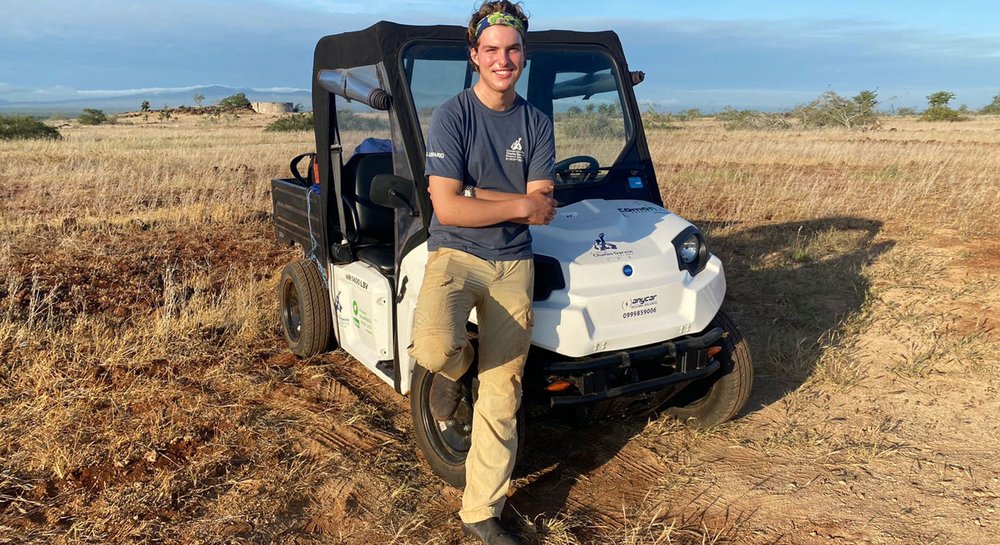
My first opportunity to travel to another island was during my second field trip. We went to Baltra Island, a former US Air Base during World War II, where the primary airport in the Galapagos is currently located. Unfortunately, the arrival of the US military and their infrastructure has caused major degradation of nature and the decline of most of the endemic and native plant populations, such as the Opuntia echios var. echios and Vachellia macracantha. Baltra is the first place that most visitors see when arriving in Galapagos and represents a unique opportunity to remediate highly degraded sites, generate knowledge about the flora of the island, and showcase the restoration process to visitors. This degradation, coupled with the importance of the island as the first place people see when arriving on the islands, demonstrates the importance of restoring Baltra. For that reason, during the field trip I participated in, we planted more than 500 new plants, including the Opuntia, Vachellia and also the Bursera.
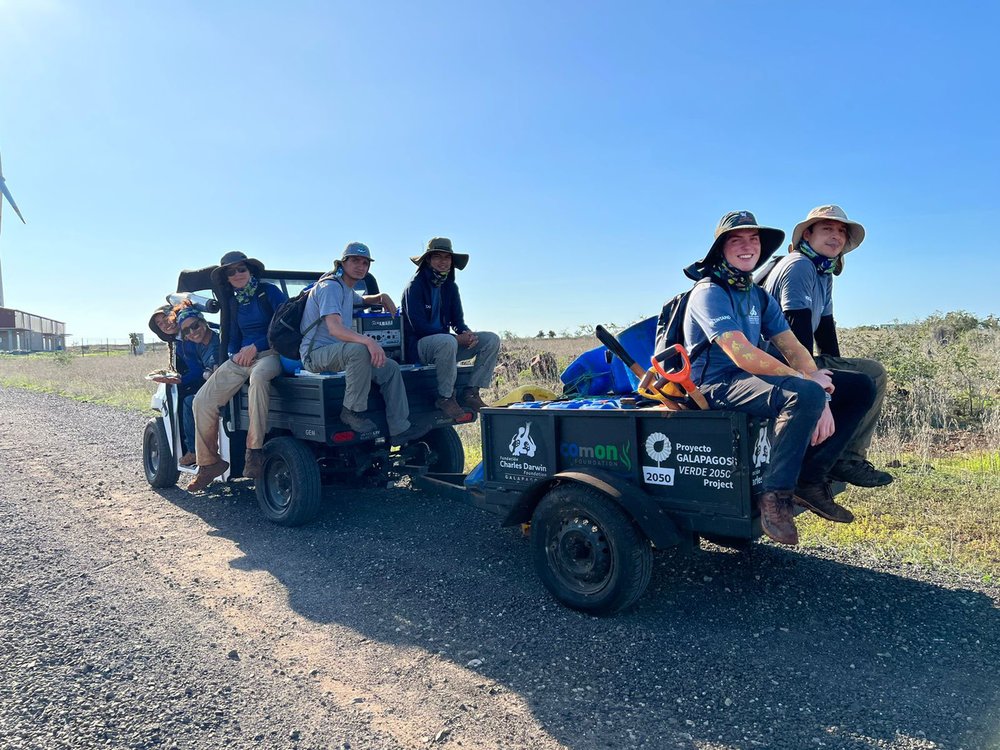
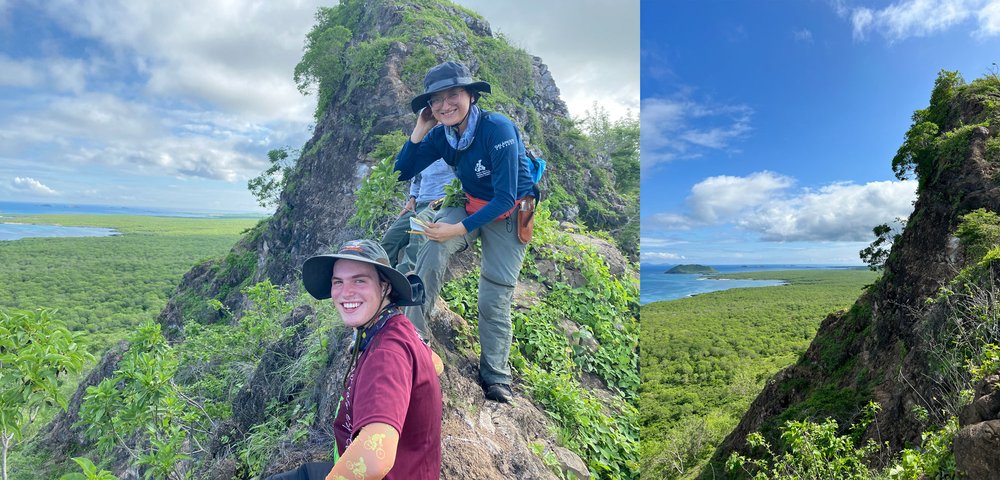
Shortly after, I had the once-in-a-lifetime opportunity to search for Scalesia aspera, an endangered species in hopes of finding surviving plants and collecting botanical samples. We visited Islote El Edén and Cerro Ballena on Santa Cruz Island, two really beautiful places, which can only be accessed by disembarking from a boat. Cerro Ballena is a gorgeous hill with a significant climb to reach the top ledge where Scalesia aspera grows. At this site, we collected our first sample. We then returned to the boat and headed to our next destination, El Edén Islet. Upon arriving, I thought I would disembark first, why not? I had one foot on a rock and my hand still on the boat when suddenly the waves rolled back. I ended up in the water, completely soaked but ready to start the search for the next Scalesia aspera sample. At this site, the path, in addition to being steep, had loose volcanic rocks. It was definitely challenging and quite risky, however, it was worth it. We were able to find our Scalesia and collected flowers and seeds of this plant to deposit them in the Herbarium CDS of the CDF.
A week later, I had the opportunity to participate in another field trip of great importance, the beginning of the population evaluation of Scalesia retroflexa. This species is among the priority species for the GV2050 Endangered Plant Species Recovery project because it is classified as critically endangered. A hike along the beautiful coastlines of Santa Cruz Island took us to one of the few sites where it is known a S. retroflexa population was present. Upon arrival, we placed tags on the Scalesia individuals so that they can be identified in future monitoring and collections. Fortunately, we are in time to plan the next steps necessary to recover Scalesia retroflexa and rescue it from critical danger. Being part of the initial phases of a project makes me feel more grateful for conservation than I have ever been.
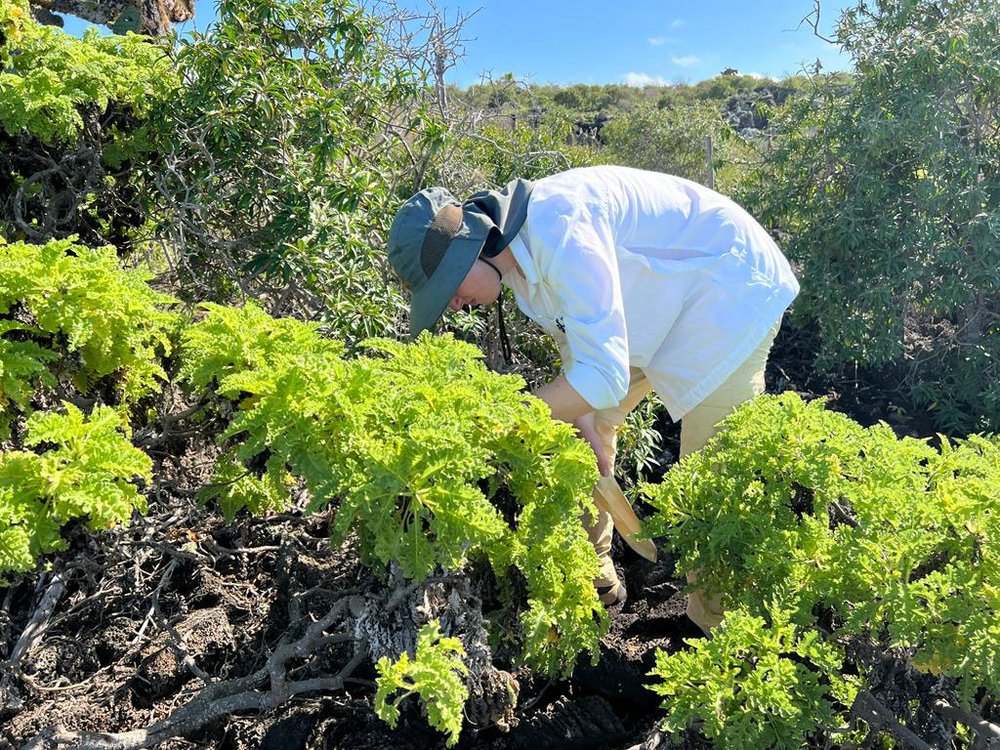
Part of my responsibilities as a volunteer was taking care of the first vertical garden of endemic and native species in the Galapagos Islands located in the shade house of the Charles Darwin Research Station. This is a model for all the ecological gardens that the GV2050 program wants to place as part of the Urban Ecological Restoration project. This project works together with the community, at schools or institutions, important places for the sustainable development of Galapagos. As it is a garden highly visible to the public, I had to make sure it was kept in the best possible condition by watering it, pruning it, feeding it nutrients and keeping extra plants in the nursery in case replacements were needed
During my last week in Galapagos, I was able to visit Floreana, the first island to be colonized. This island has a population of around 150 inhabitants and most of them live in the small town of Puerto Velasco Ibarra. The objective of our visit was to inform the new generations about science and share our passion for the restoration of the Galapagos ecosystems. For that reason, we held an event where we set up various gardens, including vertical gardens, at the local school with the help of its students. Together we planted endemic and native species, including Euphorbia viminea, Alternanthera filifolia, Lecocarpus pinnatifidus, Plumbago zeylanica, Sesuvium portulacastrum, and Alternanthera filifolia. In addition, the importance of these species and the work carried out by the GV2050 Program to conserve them were explained. It was a successful event and a wonderful trip to a magnificent island, a great end to my volunteering at GV2050.
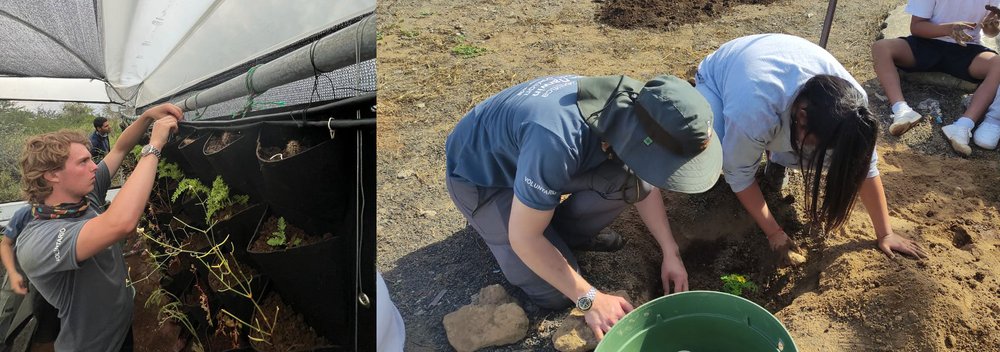
Overall I can say that my stay in the biodiversity capital of the world has been an experience I can never forget. From celebrating my birthday here, to visiting marvelous places for work, and restoring the beautiful nature. Thanks to the COmON Foundation making this possible for the Galapagos Verde 2050 Program of the Charles Darwin Foundation and its astounding team that I have been able to work with, such as Patricia Jaramillo Díaz, a wonderful hard-working, and positive person that keeps the project running and has always made sure I was enjoy my job. My friendly co-workers, Anna Calle, Pavel Enríquez-Moncayo, and Paúl Mayorga, have surprised me with their passion for the project, their strong work mentality, and for helping me whenever I had questions. At last my great co-volunteers with whom I shared great times with learning the ways of a biologist.
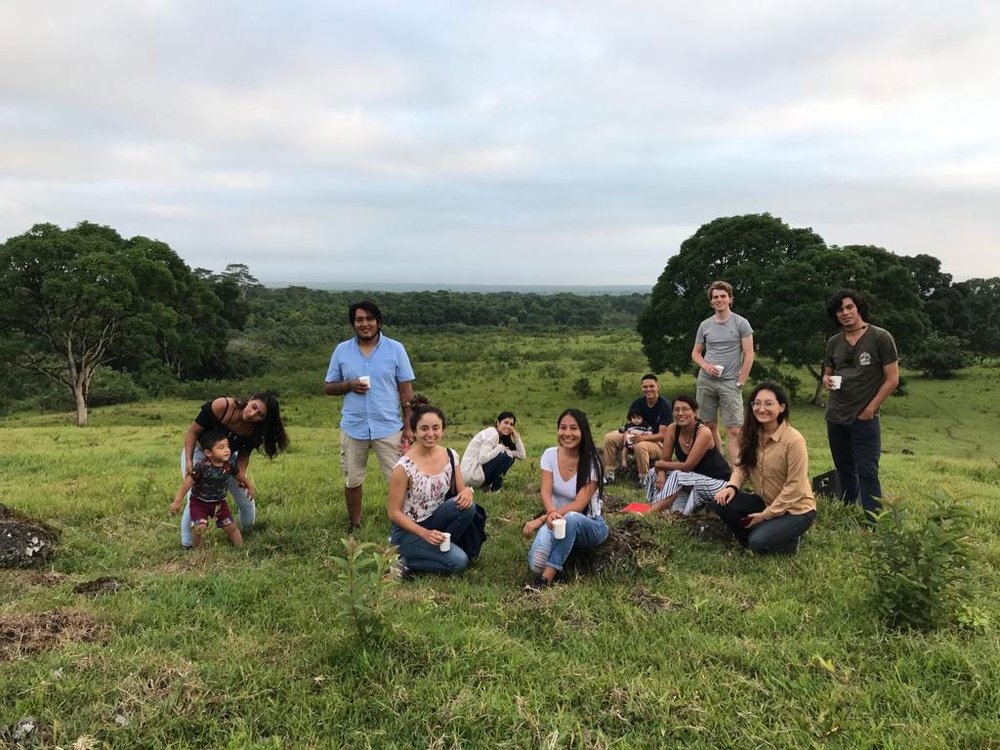
References:
León-Yánez, S., Valencia, R., Pitman, N., Endara, L., Ulloa, C., & Navarrete, H. (2011). Libro rojo. Pontificia Universidad Católica del Ecuador, Quito.





